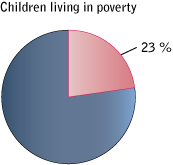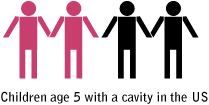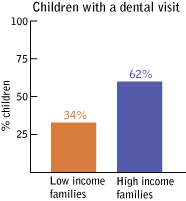Population Overview
Who are the children of the US?

Children are a significant part of the US population. In 2007, there were approximately 73.9 million children in the US aged 0-17 years. The National Center for Health Statistics reported in July 2008 that this number is up 1.5 million from 2000 and is projected to be about 80 million by 2020 and 87.8 million by 2030. This represents the highest number of births at any time, even at the peak of the baby boom in the late 1950s.
Racial and ethnic diversity among children has grown dramatically in the United States.

The percentage of children who are Hispanic has increased faster than that of any other racial or ethnic group. By 2050, 39% of US children are projected to be Hispanic.
This diversity is also seen in languages spoken at home with 20% speaking a primary language other than English.
There are also a significant number of children living in poverty. According to the US Census Bureau, 23% of children lived in poverty in 2009.
What is the oral health status of US children?

Despite the overall reduction of dental caries in the US, tooth decay in pre-schoolers has increased in recent years. According to the National Institute of Dental and Craniofacial Research, almost 20% of children age 2-5 have untreated tooth decay.
Close to half will have had a cavity by the time they are 5 years old.
That’s over 4 million kids!
Services U.S. children receive

According to the Medical Expenditure Panel Survey (MEPS), only a little over half (54.6%) of children 0 – 20 years overall, had a dental visit in 2004.
Children living in poverty are only half as likely to have a dental visit compared to children of higher income. While 62% of children from high income families had at least one dental visit during the year 34% of children from low income families had at least one dental visit.
Paradoxically, these same children with the least number of dental visits are the same populations who are at higher risk to untreated tooth decay and dental pain!

